- No products in the cart.
Clopidogrel tabs n / 75mg film about 28 pieces Izvarino Pharma
Etamsylate Injection 125mg / 2ml amp ml 10 units
$2.49
Heparin solution and / I / / n / k 5000me / ml 5ml vial 5 pcs
$15.99
$15.88
Clopidogrel tabs n / 75mg film about 28 pieces Izvarino Pharma
Description
Composition
Active substance:
1 tablet contains: clopidogrel hydrogensulfate – 97.87 mg (in terms of clopidogrel – 75 mg) ;.
Excipients:
Lactose anhydrous – 67.87 mg; microcrystalline cellulose – 54.60 mg; crospovidone – 12.50 mg; glyceryl dibehenate – 7.50 mg; talc – 7.50 mg; Sodium starch glycolate – 2.50 mg. shell composition Tablets: Opadry II pink (85G240008) – 8,00 mg (polyvinyl alcohol – 44.00% titanium dioxide – 19.50% Macrogol 3350 – 12.35% talc – 20.00%, lecithin (soya ) – 3.50% iron oxide red dye – 0.50% iron oxide yellow dye – 0.15%).
Description:
The tablets of round, lenticular shapes, film-coated pink color, with the mark on one side. On cross-section – the core from white to white with a yellowish tinge.
Product form:
Tablets, film-coated 75mg. 10 or 14 tablets in blisters.
1, 2, 3, 4, 5, 6, 9 or 10 contour cell packs of 10 pills, or 1, 2, 3, 4, 5 or 6 contour cell packs of 14 tablets together with instructions for medical application is placed in a wad cardboard boxed.
Contraindications
Hypersensitivity to clopidogrel and / or any other component of the formulation;
Severe hepatic insufficiency;
Acute bleeding, e.g., hemorrhage from peptic ulcer or intracranial hemorrhage;
Rare hereditary galactose intolerance, lactase deficiency and glucose-galactose malabsorption;
Pregnancy and lactation (see “Pregnancy and lactation” section).
Children under 18 years of age (safety and efficacy have not been established).
Carefully:
At moderate hepatic failure, at which possible predisposition to bleeding (limited clinical experience)
In chronic renal failure, mild and moderate severity (limited clinical experience).
In diseases in which there is a predisposition to bleeding (especially gastrointestinal and intraocular), and patients taking concomitant medications that may cause damage to the mucous membrane of the gastrointestinal tract (such as ASA and nonsteroidal antiinflammatory drugs (NSAIDs) , including selective inhibitors of cyclooxygenase-2 (COX-2)).
In patients who have an increased risk of bleeding: due to trauma, surgery or other pathological conditions and in patients treated with ASA, heparin, oral anticoagulants, inhibitors of glycoprotein IIb / IIIa, NSAIDs, including selective inhibitors COX-2, or selective serotonin reuptake inhibitors (SSRIs) (see. the section “Special instructions”).
When referring to a history of hematologic and allergic reactions to other thienopyridines (such as ticlopidine, prasugrel) in connection with the possibility of cross-reactions (see. The section “Special instructions”).
When newly migrated transient ischemic attack, or ischemic stroke (while the use of ASA, see. “Special instructions” section).
Dosage
75 mg
Indications
Prevention of atherothrombotic complications in patients with myocardial infarction (a prescription from a few days up to 35 days), ischemic stroke (from 7 days prescription of up to 6 months) or diagnosed with peripheral arterial occlusive disease. in patients with acute coronary syndromes without ST elevation ST (unstable angina or myocardial infarction without tooth Q), including patients who underwent stenting with percutaneous coronary intervention (in combination with acetylsalicylic acid); segment elevation ST (acute myocardial infarction) with drug treatment and the possibility of thrombolysis (in combination with acetylsalicylic acid).
Prevention of atherothrombotic and thromboembolic events, including stroke, atrial fibrillation (atrial fibrillation)
In patients with atrial fibrillation (atrial fibrillation), which have at least one risk factor for vascular events can not take oral anticoagulants and have a low risk of bleeding (in combination with ASA).
Interaction with other drugs
Oral anticoagulants: simultaneous reception of clopidogrel and oral anticoagulants may increase the intensity of bleeding, and therefore the use of this combination is not recommended. Clopidogrel has no effect on the pharmacokinetics of warfarin, and does not change the value of international normalized ratio (INR) in patients receiving long-term warfarin. Nevertheless, concomitant use of warfarin with clopidogrel may increase the risk of bleeding due to the independent effect of these drugs on hemostasis.
Appointment of inhibitors of glycoprotein IIb / IIIa in conjunction with clopidogrel requires caution in patients who have an increased risk of bleeding (trauma and surgery or other pathological conditions) (see. “Special Instructions” section).
Acetylsalicylic acid: ASA does not alter the effect of clopidogrel, inhibits ADP-induced platelet aggregation, clopidogrel but increases the influence of ASA on collagen-induced platelet aggregation. However, simultaneous reception with clopidogrel 500 mg of ASA, 2 times a day for 1 day did not lead to a significant increase in bleeding time caused by clopidogrel reception. Between clopidogrel and ASA possible pharmacodynamic interaction, which leads to increased risk of bleeding. Therefore, when simultaneous application of caution, although clinical trials of patients received a combination therapy with clopidogrel and ASA up to one year.
Heparin: according to a clinical study conducted in healthy volunteers, while taking clopidogrel did not need to change the dose of heparin and did not change its anticoagulant effect. The combined use of heparin did not alter the inhibitory effect of clopidogrel on platelet aggregation. Between clopidogrel and heparin possible pharmacodynamic interactions, which may increase the risk of bleeding, so simultaneous use of the combination requires caution.
Thrombolytics: joint application of the safety of clopidogrel fibrinspetsificheskih fibrinnespetsificheskih or thrombolytic agents and heparin was studied in patients with acute myocardial infarction. The incidence of clinically relevant bleeding was similar to that observed in the case of joint use of thrombolytic agents and heparin with ASA.
Nonsteroidal anti-inflammatory drugs (NSAIDs): in a clinical study conducted in healthy volunteers, the combined use of clopidogrel and naproxen increased hidden blood loss through the gastrointestinal tract. However, due to the lack of research on the interaction of clopidogrel with other NSAIDs, it is currently unknown whether there is an increased risk of gastrointestinal bleeding when taking clopidogrel with other NSAIDs. Therefore, the use of NSAIDs, including COX-2 inhibitors in combination with clopidogrel should be done with caution.
Selective serotonin reuptake inhibitors (SSRIs): Since SSRIs disrupt platelet activation and increase the risk of bleeding, the combined use of SSRIs with clopidogrel should be used with caution.
inhibitors of CYP2C19
Since Clopidogrel is metabolized to form its active metabolite partially by isoenzyme CYP2C19, use of drugs that inhibit this isoenzyme may lead to lower levels of the active metabolite of clopidogrel and reduce its clinical efficacy. The clinical significance of this interaction is not established. As a precaution, it is recommended to avoid the combined use of clopidogrel with drugs that inhibit isoenzyme CYP2C19 (omeprazole, esomeprazole, fluvoxamine, fluoxetine, moclobemide, voriconazole, fluconazole, ticlopidine, ciprofloxacin, cimetidine, carbamazepine, oxcarbazepine, chloramphenicol).
Proton pump inhibitors
If it becomes necessary to designate proton pump inhibitors simultaneously with clopidogrel, should use the drug with the lowest inhibition of CYP2C19 (pantoprazole or lansoprazole).
Another combination therapy
Several clinical studies have been conducted with clopidogrel and other drugs used simultaneously to investigate possible pharmacodynamic and pharmacokinetic interactions, which showed that: – when clopidogrel together with atenolol, nifedipine or both drugs simultaneously clinically significant pharmacodynamic interaction was observed; – simultaneous administration of phenobarbital, cimetidine and estrogens had no significant effect on the pharmacodynamics of clopidogrel; – pharmacokinetic parameters of digoxin and theophylline have not changed in their joint application with clopidogrel; – antacids did not reduce the absorption of clopidogrel; – According to the results of CAPRIE study, phenytoin and tobutamid can be used safely in conjunction with clopidogrel. It is unlikely that clopidogrel may affect the metabolism of other drugs, such as phenytoin and tolbutamide and NSAIDs are metabolized via isoenzyme CYP2C19; – in clinical studies there was no evidence of clinically significant adverse interaction of clopidogrel with angiotensin converting enzyme inhibitors, diuretics, beta-blockers, blockers “slow” calcium channels, hypolipidemic agents, coronary vasodilators, hypoglycemic agents (including insulin), antiepileptic drugs , medications for hormone replacement therapy.
Overdose
Symptoms: increased bleeding time and subsequent complications in the form of bleeding.
Treatment: the appearance of bleeding requires proper treatment measures, platelet transfusions. No specific antidote.
pharmachologic effect
Pharmacological group:
Antiplatelet agent.
Pharmacodynamics:
Clopidogrel is a prodrug and an active metabolite which is an inhibitor of platelet aggregation. The active metabolite of clopidogrel selectively inhibits the binding of adenosine diphosphate (ADP) with P2Y12retseptorom platelets and subsequent ADP-mediated activation of the glycoprotein complex IIb / IIIa, resulting in suppression of platelet aggregation. Due to the irreversible binding of platelets remain impervious to ADP stimulation throughout the remainder of their useful life (approximately 7-10 days), and the restoration of normal functions of platelets occurs at a rate corresponding to the update rate of platelets. Platelet aggregation induced by agonists other than ADP, it was also inhibited by blocking the activation of enhanced platelet ADP releasable.
Since the formation of an active metabolite occurs by means of isozymes of cytochrome P450, some of which may be different or polymorphism can be inhibited by other drugs, not all patients may adequate inhibition of platelet aggregation (see. Subsection “Pharmacogenetics” under “Pharmacological properties”).
Clopidogrel is capable of preventing development of atherothrombosis in any localizations of atherosclerotic vascular lesions, in particular in lesions of cerebral, coronary or peripheral arteries.
With daily administration of clopidogrel at a dose of 75 mg from day reception marked significant inhibition of ADP-induced platelet aggregation, which gradually increases after 3-7 days and then discharged at a constant level (when reaching equilibrium). At equilibrium, platelet aggregation is suppressed by an average of 40-60%. platelet aggregation, and bleeding time are returned to the initial level within an average of 5 days after cessation of clopidogrel.
In a small study comparing the pharmacodynamic properties of clopidogrel in both men and women, less inhibition
ADP-induced platelet aggregation was observed in women, but there was no difference in prolongation of bleeding time. In the largest controlled CAPRIE trial (clopidogrel in comparison with acetylsalicylic acid (ASA) in patients at risk of ischemic events), the frequency of clinical outcome, and other side effects and deviations from the norm clinical laboratory values were similar in both men and women.
Pharmacokinetics:
Suction
After a single dose and at course ingestion of a dose of 75 mg per day of clopidogrel is rapidly absorbed from the gastrointestinal tract (GIT). The maximum concentration (Cmax) of the unchanged clopidogrel achieved on average after about 45 minutes in plasma after drug administration and is 2.2-2.5 ng / l. According kidney excretion of metabolites clopidogrel its absorption is not less than 50%.
Distribution In vitro clopidogrel and its main circulating metabolite inactive reversibly bind to plasma proteins (98% and 94%, respectively) and this association is insatiable in a wide range of concentrations.
Metabolism
Clopidogrel is rapidly metabolized in the liver. In vitro and in vivo Clopidogrel is metabolized by two major pathways: the first – hydrolysis to inactive carboxylic acid derivative (defined by the main metabolite of clopidogrel) under the action of esterases; second – under the action of oxidation of cytochrome P450 isoenzymes. Initially, clopidogrel is metabolised to a 2-oksoklopidogrela is an intermediate metabolite. Subsequent metabolism of 2-oksoklopidogrela leads to formation of a pharmacologically active thiol derivative clopidogrel. Under conditions in vitro are involved in the metabolism of clopidogrel isozymes CYP3A4, CYP2C19, CYP1A2, and CYP2B6. The active thiol metabolite can be isolated only in in vitro studies; under conditions in vivo it is rapidly and irreversibly binds to the receptor R2Y12 platelets, thereby inhibiting platelet aggregation.
Cmax thiol active metabolite following a single dose of clopidogrel loading dose of 300 mg twice higher than when taking the drug in a maintenance dose of 75 mg per day for 4 days. The time to reach maximum concentration (TSmax) thiol active metabolite is about 30-60 minutes.
breeding
Within 120 hours after ingestion of a man 14C-labeled clopidogrel about 50% of the radiolabel found in urine and approximately 46% in feces. After a single oral dose of 75 mg of the half-life (T1 / 2) of clopidogrel is about 6 hours. After a single dose and repeated doses receiving T1 / 2 of the main circulating in the blood inactive metabolite is 8 hours.
pharmacogenetics
Several polymorphic enzyme cytochrome P450 system are involved in the activation of clopidogrel. CYP2C19 isozyme is involved in the formation of active metabolite or an intermediate metabolite – 2-oksoklopidogrela. Pharmacokinetics and antiplatelet effect of the active metabolite of clopidogrel investigated by ex vivo platelet aggregation varies depending on the genotype isoenzyme CYP2C19. Allele CYP2C19 * 1 gene responsible for the normal functioning metabolism, whereas alleles CYP2C19 * 2 and CYP2C19 * 3 are responsible for the reduced metabolism. Alleles CYP2C19 * 2 and CYP2C19 * 3 are the cause of reducing the metabolism in most members Caucasian (85%) and Mongoloid races (99%). Other alleles, which binds to the absence or reduction of metabolism, less common and include, but are not limited to gene alleles CYP2C19 * 4, * 5, * 6, * 7, and * 8. Patients who are slow metabolizers, must possess the above two alleles with loss of function. Published data on the frequency of occurrence of phenotypes slow metabolisers make up 2% in Caucasian individuals, 4% for Blacks and 14% of persons in the Mongoloid race officials.
Separate groups of patients
The pharmacokinetics of the active metabolite of clopidogrel in selected groups of patients has not been studied.
Elderly patients
Elderly volunteers (over 75 years) compared with younger volunteers was received in terms of differences in platelet aggregation and bleeding time, no dosage adjustment of the drug is required.
Child patients
Data not available.
Patients with impaired renal function
Patients with severe renal impairment (creatinine clearance 5-15 ml / min) after repeated receptions of clopidogrel 75 mg / day inhibition
ADP-induced platelet aggregation were 25% lower compared to that in healthy volunteers but the prolongation of bleeding time was similar to that in healthy volunteers receiving clopidogrel 75 mg / day. In addition, all patients was well tolerated.
Patients with impaired liver function
In patients with severe liver after daily for 10 days clopidogrel in a daily dose of 75 mg inhibition
ADP-induced platelet aggregation was similar to that in healthy volunteers. The mean bleeding time was also comparable in both groups.
Patients of different race
Prevalence isozyme alleles CYP2C19, corresponding interim or decreased metabolism, is characterized in representatives of different racial groups. The available literature data on their prevalence among representatives of the Mongoloid race insufficient to assess their importance isoenzyme CYP2C19 genotyping to predict the development of ischemic complications.
Pregnancy and breast-feeding
Pregnancy
Исследования на животных не выявили прямых или непрямых неблагоприятных эффектов на течение беременности, эмбриональное развитие, роды и постнатальное развитие. Так как не всегда по результатам исследований на животных можно предсказать реакцию у человека, и ввиду отсутствия данных контролируемых клинических исследований по приему клопидогрела беременными женщинами, в качестве меры предосторожности не рекомендуется прием клопидогрела во время беременности, за исключением тех случаев, когда, по мнению врача, его применение настоятельно необходимо.
Breastfeeding
В исследованиях на крысах было показано, что клопидогрел и/или его метаболиты экскретируются в грудное молоко. Данные об экскреции клопидогрела в грудное молоко у человека отсутствуют. В случае лечения клопидогрелом следует прекратить кормление грудью.
Conditions of supply of pharmacies
On prescription.
side effects
Для оценки частоты развития нежелательных явлений используют следующую классификацию ВОЗ: Очень часто (> 1/10), Часто (> 1/100 и 1/1000 и 1/10 000 и 1/10 000), Частота неизвестна (по имеющимся данным установить частоту развития нежелательного явления не представляется возможным).
Со стороны крови и лимфатической системы: нечасто – тромбоцитопения, лейкопения, эозинофилия; редко – нейтропения, включая тяжелую нейтропению; очень редко – тромботическая тромбоцитопеническая пурпура, апластическая анемия, панцитопения, агранулоцитоз, тяжелая тромбоцитопения, гранулоцитопения, анемия; частота неизвестна – приобретенная гемофилия А.
Со стороны иммунной системы: очень редко – анафилактические реакции, сывороточная болезнь; частота неизвестна – перекрестная гиперчувствительность к другим тиенопиридинам (например, тиклопидину, прасугрелу);
Со стороны нервной системы: нечасто – внутричерепное кровоизлияние (несколько случаев со смертельным исходом), головная боль, парестезии, головокружение; очень редко – нарушения вкусового восприятия.
Нарушения психики: очень редко – спутанность сознания, галлюцинации.
Со стороны органа зрения: нечасто – ретинальное кровоизлияние, конъюктивальное кровоизлияние, гемофтальм.
Со стороны органа слуха и лабиринтные нарушения: редко – вертиго.
Со стороны кожи и подкожных тканей: часто – «синяки» (локальные подкожные кровоизлияния); нечасто – кожная сыпь и зуд, тромбоцитопеническая пурпура; очень редко – ангионевротический отек, эритематозная сыпь, крапивница, буллёзный дерматит (токсический эпидермальный некролиз, синдром Стивенса-Джонсона, многоформная эритема), экзема, плоский лишай, синдром лекарственной гиперчувствительности, лекарственная сыпь с эозинофилией и системными проявлениями (DRESS-синдром), эксфолиативная сыпь.
Со стороны почек и мочевыводящих путей: нечасто – гематурия; очень редко – гломерулопатия (в т.ч. гломерулонефрит), гиперкреатининемия.
Со стороны скелетно-мышечной и соединительной ткани: очень редко – кровоизлияния в мышцы и суставы, артрит, артралгия, миалгия.
Со стороны желудочно-кишечного тракта: очень часто – желудочно-кишечное кровотечение, диарея, боль в животе, диспепсия; нечасто – язвенная болезнь желудка и двенадцатиперстной кишки, гастрит, рвота, тошнота, запор, метеоризм; редко – забрюшинное кровоизлияние; очень редко – желудочно-кишечное кровотечение и забрюшинное кровоизлияние с летальным исходом, панкреатит, колит (включая язвенный колит или лимфоцитарный колит), стоматит.
Со стороны печени и желчевыводящих путей: очень редко – острая печёночная недостаточность, гепатит (неинфекционный).
Со стороны дыхательной системы, органов грудной клетки и средостения: часто – носовое кровотечение; очень редко – кровотечение из дыхательных путей (кровохарканье, легочное кровотечение), интерстициальный пневмонит, бронхоспазм, эозинофильная пневмония.
Со стороны сердечно-сосудистой системы: часто – гематома; very rarely – severe bleeding, bleeding from the surgical wound, vasculitis, decreased blood pressure.
Лабораторные и инструментальные данные: нечасто – удлинение времени кровотечения, уменьшение количества нейтрофилов и/или тромбоцитов в периферической крови, нарушения функциональных проб печени, повышение концентрации креатинина в плазме крови.
Общие расстройства и нарушения в месте введения: часто – кровотечения из места пунктирования сосудов; очень редко – повышение температуры тела.
special instructions
При лечении клопидогрелом, особенно в течение первых недель лечения и/или после инвазивных кардиологических процедур/хирургического вмешательства, необходимо вести тщательное наблюдение за пациентами на предмет исключения признаков кровотечения, в т.ч. скрытого.
В связи с риском развития кровотечения и гематологических нежелательных эффектов (см. раздел «Побочное действие») в случае появления в ходе лечения клинических симптомов, указывающих на возможность кровотечения, необходимо срочно сделать клинический анализ крови, определить активированное частичное тромбопластиновое время (АЧТВ), количество тромбоцитов, показатели функциональной активности тромбоцитов и провести другие необходимые исследования.
Клопидогрел, также как и другие антиагрегантные препараты, следует применять с осторожностью у пациентов, имеющих повышенный риск развития кровотечения, связанный с травмами, хирургическими вмешательствами или другими патологическими состояниями, а также у пациентов получающих АСК, НПВП, в том числе ингибиторы ЦОГ-2, гепарин или ингибиторы гликопротеина IIb/IIIа, СИОЗС и тромболитические препараты.
Совместное применение клопидогрела с варфарином может усилить интенсивность кровотечений (см. раздел «Взаимодействие с другими лекарственными средствами»), поэтому следует соблюдать осторожность при совместном применении клопидогрела и варфарина.
Если пациенту предстоит плановая хирургическая операция, и при этом нет необходимости в антитромбоцитарном эффекте, то за 7 дней до операции прием клопидогрела следует прекратить.
Клопидогрел удлиняет время кровотечения и должен применяться с осторожностью у пациентов с заболеваниями, предрасполагающими к развитию кровотечений (особенно желудочно-кишечных и внутриглазных). Препараты, которые могут вызвать повреждения слизистой оболочки желудочно-кишечного тракта (такие как АСК, НПВП) у пациентов, принимающих клопидогрел, следует применять с осторожностью.
Пациенты должны быть предупреждены о том, что при приеме клопидогрела (самостоятельно или в комбинации с АСК) для остановки кровотечения может потребоваться больше времени, а также о том, что в случае возникновения у них необычного (по локализации или продолжительности) кровотечения им следует сообщить об этом своему лечащему врачу. Перед любой предстоящей операцией и перед началом приема любого нового лекарственного препарата пациенты должны сообщать врачу (включая стоматолога) о приеме клопидогрела.
Очень редко после применения клопидогрела (иногда даже непродолжительного) отмечались случаи развития тромботической тромбоцитопенической пурпуры, которая характеризуется тромбоцитопенией и микроангиопатической гемолитической анемией, сопровождающимися неврологическими расстройствами, нарушением функции почек и лихорадкой, и является потенциально угрожающим жизни состоянием, требующим немедленного лечения, включая плазмаферез.
В период лечения необходимо контролировать функциональную активность печени. При тяжелых поражениях печени иметь в виду риск развития геморрагического диатеза.
Препарат следует с осторожностью назначать пациентам с нарушениями функций почек.
Прием клопидогрела не рекомендуется при остром инсульте с давностью менее 7 дней (так как отсутствуют данные по его применению при этом состоянии).
У пациентов с недавно перенесенным преходящим нарушением мозгового кровообращения или инсультом, имеющих высокий риск развития повторных ишемических осложнений, комбинация АСК и клопидогрела повышает частоту развития больших кровотечений. Поэтому такая комбинированная терапия должна проводиться с осторожностью и только в случае доказанной клинической пользы от ее применения.
Сообщалось о случаях развития приобретенной гемофилии при приеме клопидогрела. При подтвержденном изолированном увеличении АЧТВ, сопровождающимся или не сопровождающимся развитием кровотечения, следует рассмотреть вопрос о возможности развития приобретенной гемофилии. Пациенты с подтвержденным диагнозом приобретенной гемофилии должны наблюдаться и лечиться специалистами по данному заболеванию и прекратить прием клопидогрела.
У пациентов с низкой активностью изофермента CYP2C19 при применении клопидогрела в рекомендуемых дозах образуется меньше активного метаболита клопидогрела и слабее выражено его антиагрегантное действие, в связи с чем при приеме обычно рекомендуемых доз клопидогрела при остром коронарном синдроме или чрескожном коронарном вмешательстве возможна более высокая частота развития сердечно-сосудистых осложнений, чем у пациентов с нормальной активностью изофермента CYP2C19. Имеются тесты для определения генотипа CYP2C19. Эти тесты могут быть использованы для помощи в выборе терапевтической стратегии. Рассматривается вопрос о применении более высоких доз клопидогрела у пациентов с низкой активностью изофермента CYP2C19 (см. подраздел «Фармакогенетика» раздела «Фармакологические свойства», разделы «
С осторожностью », «Способ применения и дозы»).
Следует уточнять наличие в анамнезе у пациентов аллергических и/или гематологических реакций на другие производные тиенопиридина (тиклопидин, прасугрел), т.к. описаны случаи перекрестных аллергических и/или гематологических реакций между тиенопиридинами (см. раздел «Побочное действие»). Пациенты, у которых ранее отмечалась аллергические и/или гематологические реакции на другие производные тиенопиридина, требуют тщательного наблюдения в течение всего периода терапии для выявления признаков гиперчувствительности к клопидогрелу.
Клопидогрел не следует принимать пациентам с редкой наследственной непереносимостью галактозы, дефицитом лактозы и синдромом глюкозо-галактозной мальабсорбции.
Влияние препарата на выполнение потенциально опасных видов деятельности, требующих повышенной концентрации и быстроты психомоторных реакций
Клопидогрел не оказывает существенного влияния на способности, необходимые для управления автомобилем или для занятий потенциально опасными видами деятельности.
Storage conditions
In the dark place at a temperature not higher than 25 C.
Keep out of the reach of children.
Dosing and Administration
Inside, regardless of the meal.
Пациенты с нормальной активностью изофермента CYP2C19
Инфаркт миокарда, ишемический инсульт или диагностированная окклюзионная болезнь периферических артерий.
По 1 таблетке, покрытой пленочной оболочкой (75 мг) один раз в сутки.
У пациентов с инфарктом миокарда (ИМ) лечение можно начинать с первых дней до 35 дня ИМ, а у пациентов с ишемическим инсультом (ИИ) – в сроки от 7 дней до 6 месяцев после ИИ.
Acute coronary syndromes without ST segment lift (unstable angina, myocardial infarction without tooth Q)
Лечение клопидогрелом должно быть начато с однократного приема нагрузочной дозы, составляющей 300 мг, а затем продолжено приемом дозы 75 мг один раз в сутки (в сочетании с АСК в дозах 75-325 мг в сутки). Поскольку применение более высоких доз АСК связано с увеличением риска кровотечений, рекомендуемая при этом показании доза АСК не должна превышать 100 мг. Оптимальная продолжительность лечения при этом показании официально не определена. Результаты клинических исследований подтверждают целесообразность приема препарата до 12 месяцев после развития острого коронарного синдрома без подъема сегмента ST. The maximum beneficial effect is observed for the third month of treatment.
Острый коронарный синдром с подъемом сегмента ST (острый инфаркт миокарда с подъемом сегмента ST)
Клопидогрел назначается однократно в дозе 75 мг один раз в сутки с первоначальным однократным приемом нагрузочной дозы клопидогрела 300 мг в комбинации с АСК и тромболитиками (или без тромболитиков). In patients older than 75 years treated with clopidogrel should start without receiving a loading dose of it. Combination therapy is started as early as possible after the onset of symptoms and continued for at least four weeks. Эффективность комбинированного применения клопидогрела и ацетилсалициловой кислоты свыше 4 недель при данном показании не изучалась.
Фибрилляция предсердий (мерцательная аритмия)
Клопидогрел следует принимать один раз в сутки в дозе 75 мг. В комбинации с клопидогрелом надо начинать и затем продолжать приём АСК (75-100 мг/сутки).
Пропуск приема очередной дозы
Если прошло менее 12 часов после пропуска приема очередной дозы, то следует немедленно принять пропущенную дозу препарата, а затем в следующие дозы принимать в обычное время.
Если прошло более 12 часов после пропуска приема очередной дозы, то пациент должен принять следующую дозу в обычное время (не следует принимать двойную дозу).
Пациенты с генетически обусловленной сниженной активностью изофермента CYP2C19
Статус медленного CYP2C19-метаболизатора ассоциируется с уменьшением антиагрегантного действия клопидогрела. Режим применения более высоких доз (600 мг – нагрузочная доза, затем – 150 мг 1 раз в сутки ежедневно) у медленных метаболизаторов увеличивает антиагрегантное действие клопидогрела (см. раздел «Фармакокинетика»). Однако оптимальный режим дозирования для пациентов со сниженной активностью изофермента СYP2C19 в клинических исследованиях пока не установлен.
Elderly patients
Не требуется коррекция дозы.
Пациенты детского возраста
Отсутствует опыт применения препарата у детей.
Patients with impaired renal function
После повторных приемов клопидогрела в дозе 75 мг/сутки у пациентов с тяжелым поражением почек (клиренс креатинина от 5 до 15 мл/мин) ингибирование АДФ-индуцированной агрегации тромбоцитов (25 %) было ниже по сравнению с таковым у здоровых добровольцев, однако, удлинение времени кровотечения было подобным таковому у здоровых добровольцев, получавших клопидогрел в дозе 75 мг в сутки. Кроме этого, у всех пациентов была хорошая переносимость препарата.
Patients with impaired liver function
После ежедневного в течение 10 дней приёма клопидогрела в суточной дозе 75 мг у пациентов с тяжелым поражением печени ингибирование АДФ-индуцированной агрегации тромбоцитов было подобным таковому у здоровых добровольцев. The mean bleeding time was also comparable in both groups.
Пациенты различной расовой принадлежности
Распространенность аллелей генов изофермента CYP2C19, отвечающих за промежуточный и сниженный метаболизм клопидогрела до его активного метаболита, различается у представителей различных этнических групп (см. раздел «Фармакогенетика»). Имеются лишь ограниченные литературные данные для представителей монголоидной расы для оценки клинической значимости генотипирования изофермента CYP2C19 в плане прогнозирования развития ишемических осложнений.
Information
Appearance may differ from that depicted in the picture. There are contraindications. You need to read the manual or consult with a specialist
Additional information
| Weight | 0.100 kg |
|---|---|
| Manufacturer | Izvarin INN |

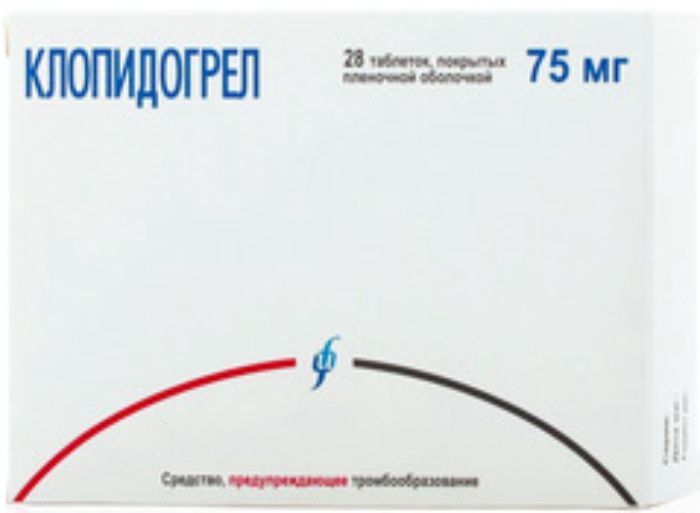
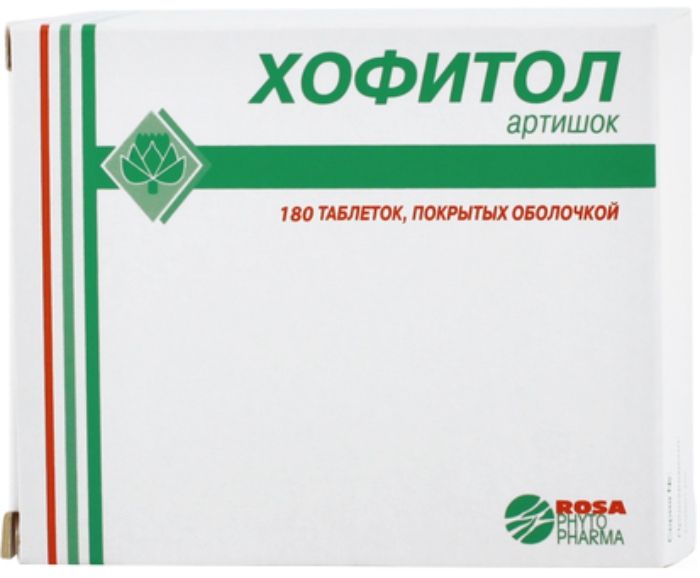

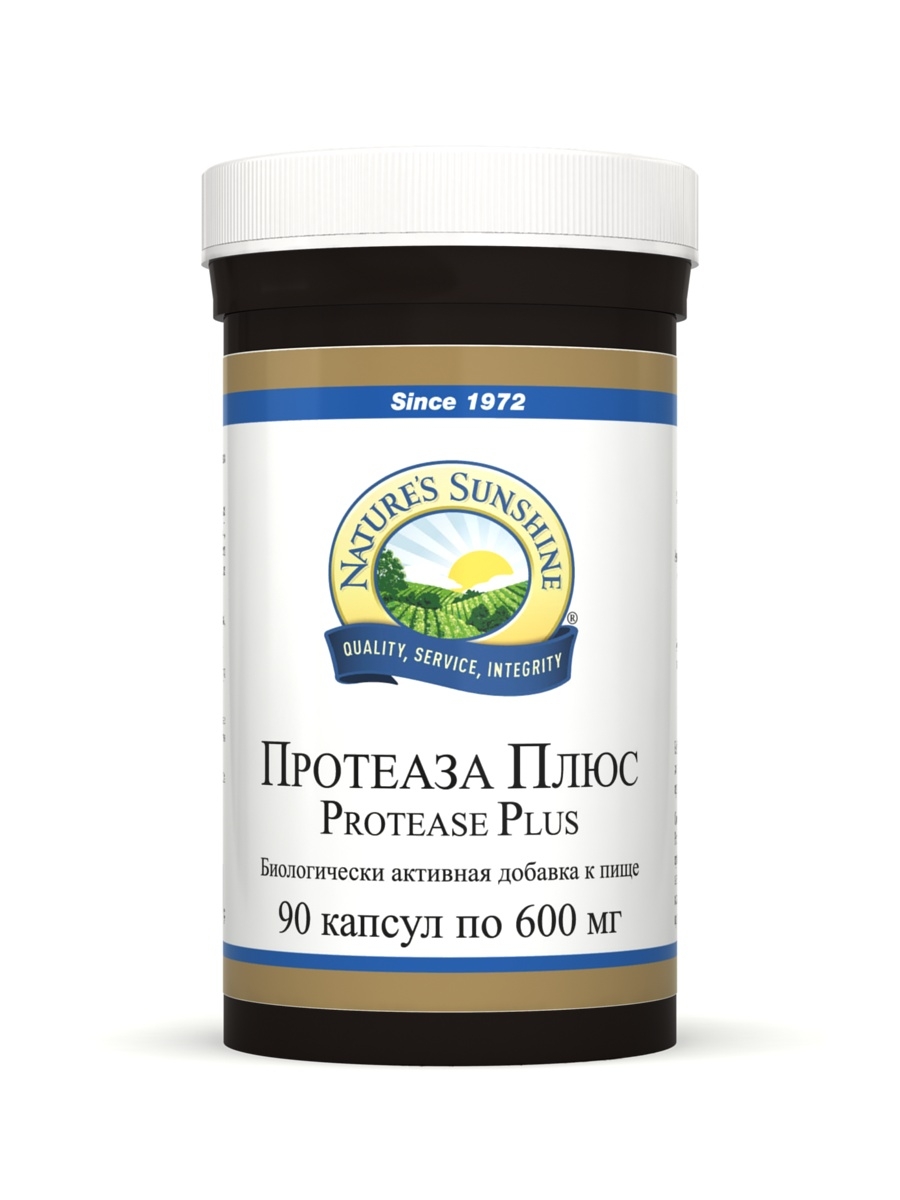
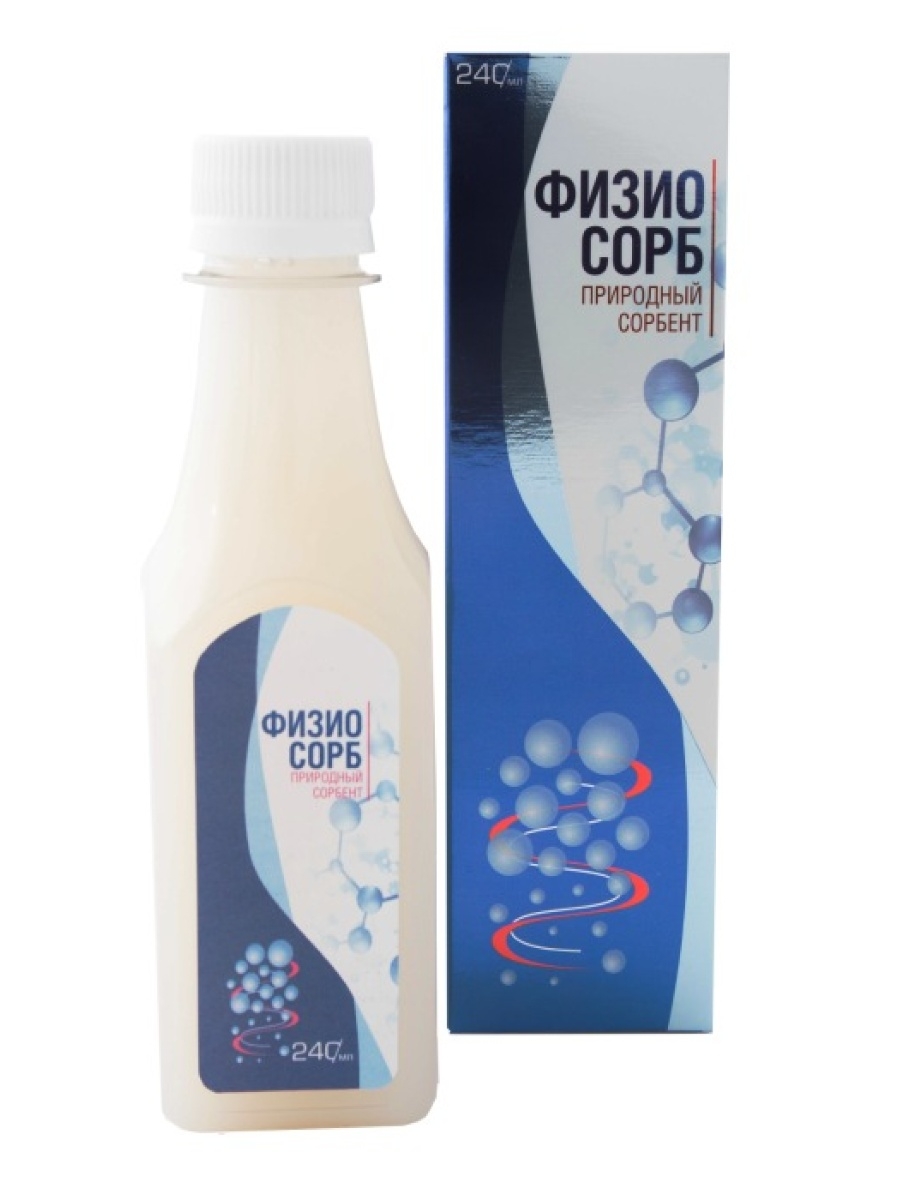
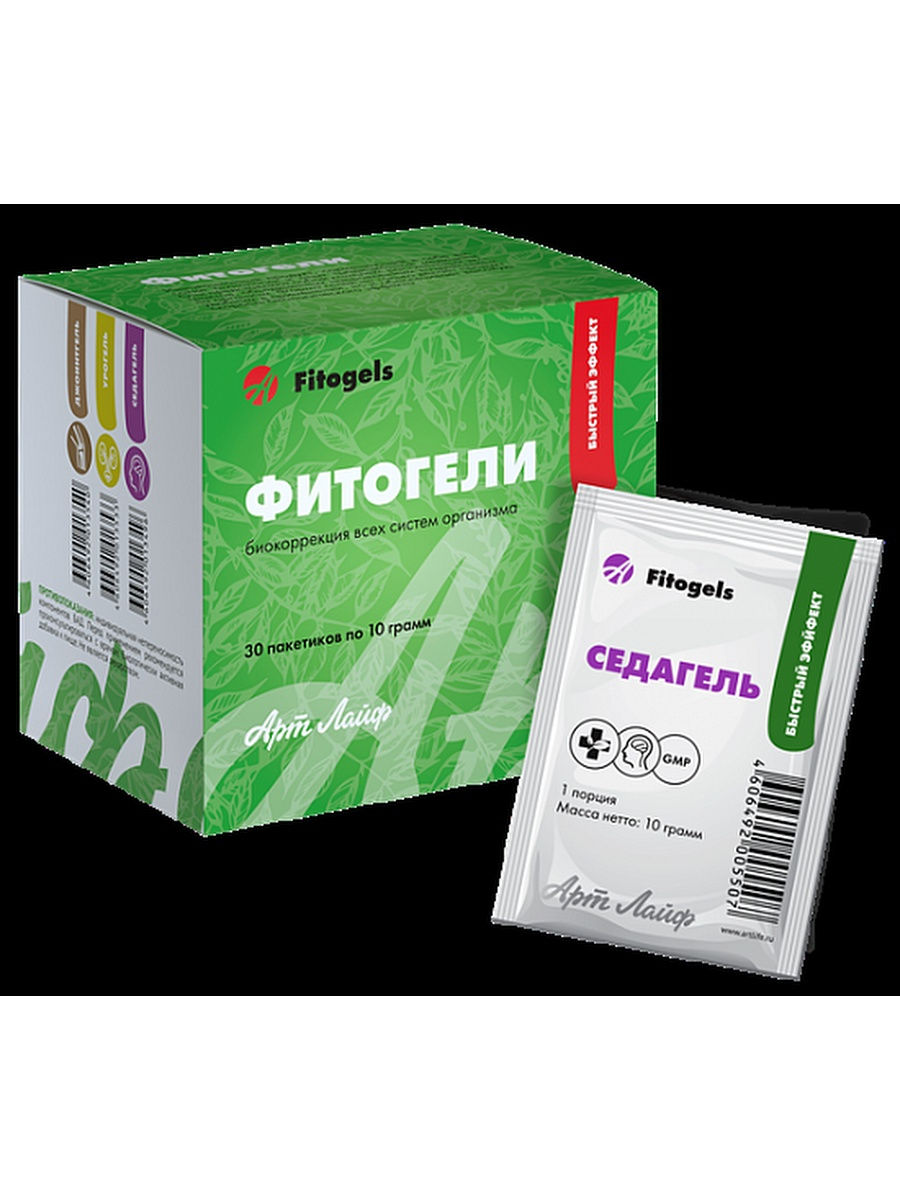
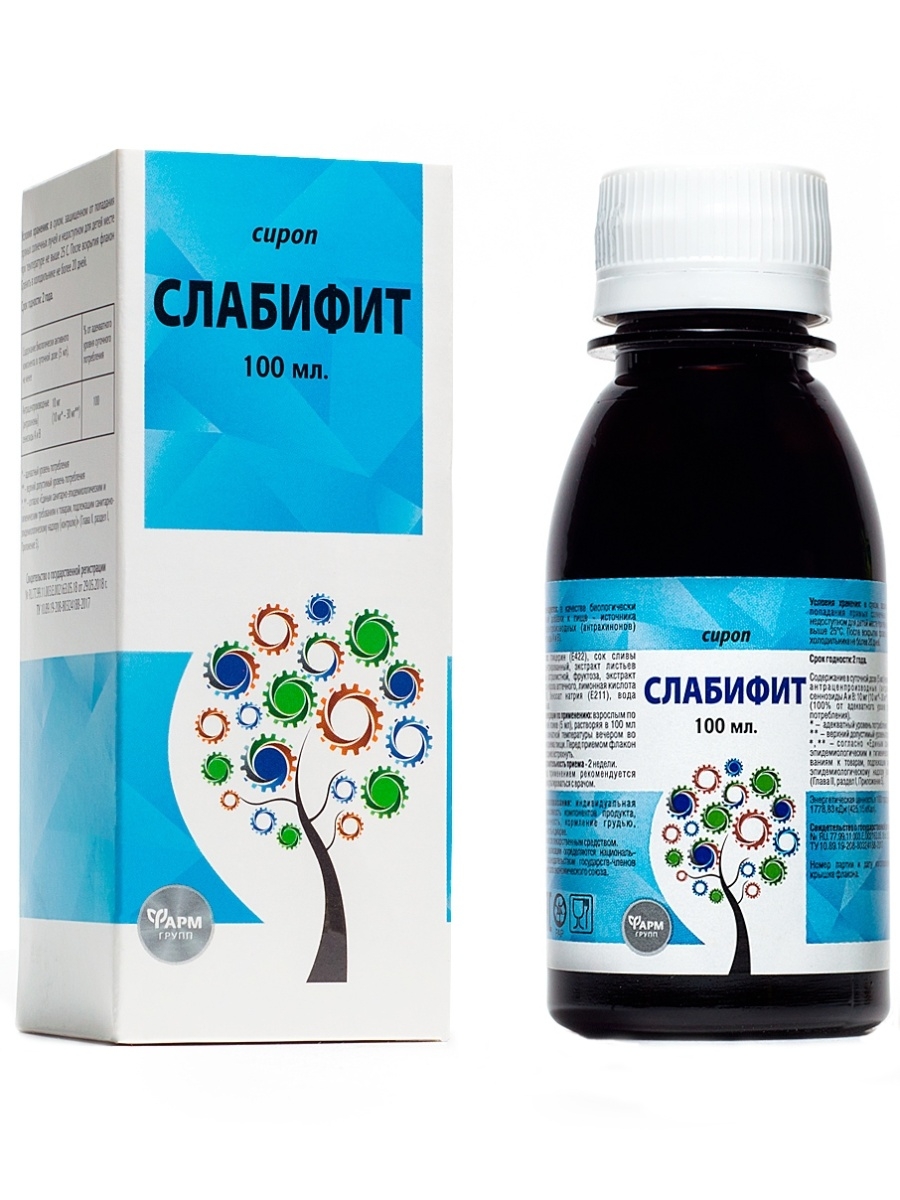




There are no reviews yet.